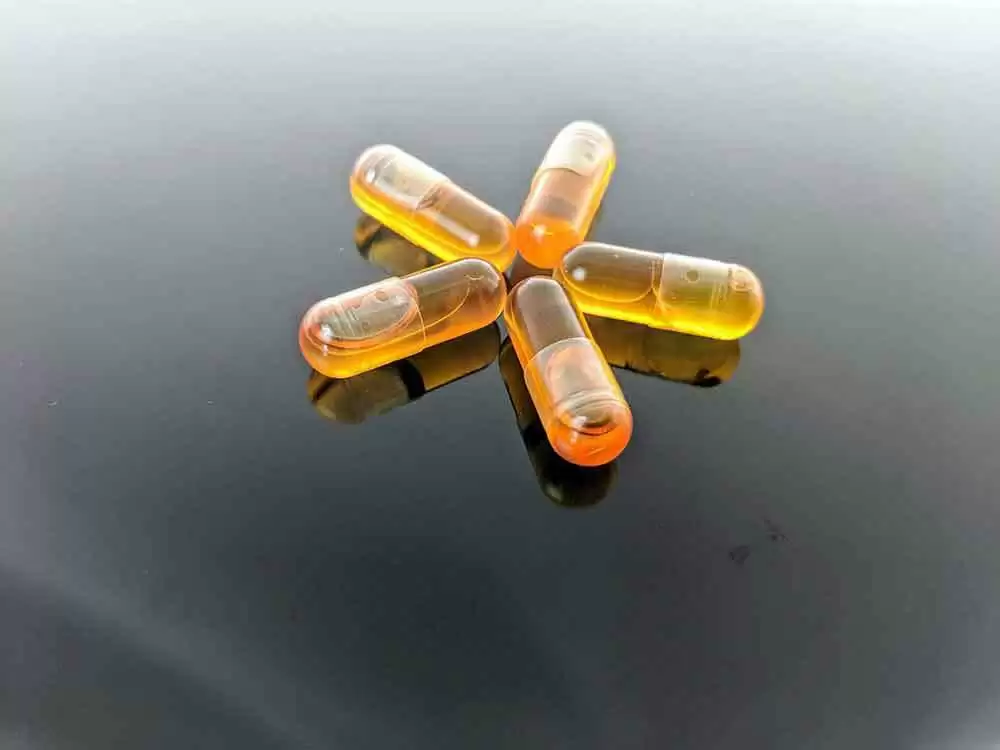Celiac.com 05/23/2025 - Celiac disease is an autoimmune condition triggered by gluten—a protein found in wheat, barley, and rye. When individuals with celiac disease consume gluten, their immune system mistakenly attacks the lining of the small intestine, damaging the villi responsible for nutrient absorption. As a result, even those who eat balanced diets can become malnourished or develop significant deficiencies before or during treatment.
After a diagnosis, transitioning to a gluten-free diet is essential—but that’s just the beginning. Repairing the gut, replenishing depleted nutrients, and restoring overall health are equally important steps on the road to recovery.
Celiac.com Sponsor (A12):
This article explores the most common nutrient deficiencies linked to celiac disease—especially iron, vitamin B12, and vitamin D—and offers practical strategies to help individuals with celiac disease or gluten sensitivity regain optimal health.
Why Nutrient Deficiencies Are Common in Celiac Disease
The small intestine plays a vital role in nutrient absorption. In celiac disease, immune-driven inflammation damages the intestinal villi—tiny, fingerlike projections that absorb nutrients from food. When these structures become flattened or destroyed, key vitamins and minerals can’t be absorbed properly.
Certain sections of the small intestine are responsible for specific nutrients:
- Duodenum (upper small intestine): iron, calcium, magnesium
- Jejunum (middle): folate, vitamin B6, vitamin B1
- Ileum (lower): vitamin B12, bile salts, fat-soluble vitamins like A, D, E, and K
Because the duodenum is often the most severely affected in celiac disease, deficiencies in iron and fat-soluble vitamins are particularly common—even early in the disease.
Iron Deficiency: The Most Common Clue
Why It Happens
Iron deficiency is often the first detectable sign of celiac disease. Iron is primarily absorbed in the duodenum, which is typically damaged in untreated celiac patients. Without healthy villi, iron from food and supplements simply doesn’t make it into the bloodstream.
Women of reproductive age are at even higher risk due to menstrual blood loss, and children may experience stunted growth or fatigue due to low iron.
Symptoms
- Fatigue and weakness
- Pale skin
- Shortness of breath
- Dizziness or headaches
- Cold hands and feet
- Restless leg syndrome
How to Replenish Iron
- Start with food: Focus on iron-rich gluten-free sources like red meat, lentils, spinach, pumpkin seeds, and fortified gluten-free cereals.
- Enhance absorption: Pair iron-containing foods with vitamin C (e.g., citrus, bell peppers, strawberries) to boost uptake.
- Avoid inhibitors: Tea, coffee, and calcium can block iron absorption if consumed with meals.
- Supplement if needed: Iron supplements may be required for moderate to severe cases, but always under a doctor’s guidance. Some people with celiac disease may tolerate liquid or chelated forms better during the healing phase.
Vitamin B12 Deficiency: Hidden and Dangerous
Why It Happens
Although vitamin B12 is absorbed in the ileum—a region less affected in early-stage celiac disease—it still often becomes depleted due to several compounding factors:
- Ongoing inflammation may impair overall absorption.
- Many individuals with celiac disease also have atrophic gastritis or pernicious anemia, conditions that reduce intrinsic factor production, which is required to absorb B12.
- The gut microbiome may also play a role, especially if there is bacterial overgrowth that consumes B12 before the body can absorb it.
Symptoms
- Tingling or numbness in hands and feet
- Brain fog or memory issues
- Fatigue
- Mood changes or depression
- Muscle weakness
- Glossitis (smooth, swollen tongue)
How to Replenish B12
- Include natural sources: Eggs, fish, chicken, dairy, and fortified gluten-free foods.
- Try sublingual supplements: These dissolve under the tongue and may bypass intestinal absorption challenges.
- Injections may be needed: For those with severe depletion or intrinsic factor issues, intramuscular injections of B12 are often effective.
- Monitor levels: Even after levels normalize, routine testing can help prevent recurrence.
Vitamin D Deficiency: The Silent Epidemic
Why It Happens
Vitamin D is a fat-soluble vitamin absorbed in the small intestine. Malabsorption of fats, which is common in untreated celiac disease, can interfere with vitamin D uptake. Additionally, many people—especially those living in northern climates or spending limited time outdoors—are already at risk of deficiency.
Low vitamin D levels are linked to poor bone health, weakened immunity, and even increased autoimmune activity.
Symptoms
- Bone pain or frequent fractures
- Muscle weakness or cramps
- Fatigue
- Low mood, especially in winter months
- Frequent colds or infections
How to Replenish Vitamin D
- Get sun exposure: Aim for 10–30 minutes of midday sun several times per week, depending on skin tone and geography.
- Eat vitamin D-rich foods: Salmon, sardines, fortified plant-based milks, eggs, and mushrooms exposed to UV light.
- Take supplements: Vitamin D3 (cholecalciferol) is usually more effective than D2. Dosages should be tailored to blood test results, so work with your healthcare provider.
Other Common Deficiencies to Watch
While iron, B12, and D are the most discussed, other nutrients often fall short in people with celiac disease, particularly around diagnosis:
- Calcium: Poor absorption and secondary lactose intolerance may reduce intake. Essential for bone health.
- Magnesium: Needed for muscle function and heart rhythm. Often depleted in chronic diarrhea.
- Folate: Low in gluten-free processed foods; essential for red blood cells and during pregnancy.
- Zinc: Important for immune function, skin health, and wound healing.
Keeping track of these through regular testing can help prevent long-term complications.
Healing After Diagnosis: A Roadmap for Recovery
1. Commit to a Strict Gluten-Free Diet
The foundation of recovery is lifelong adherence to a 100% gluten-free diet. Even small exposures can continue to damage the intestines, preventing nutrient absorption and allowing deficiencies to persist. Be vigilant about hidden sources of gluten in sauces, medications, and cross-contaminated foods.
2. Focus on Nutrient-Dense, Whole Foods
Rely less on processed gluten-free replacements and more on:
- Leafy greens and vegetables
- Lean proteins (chicken, fish, legumes)
- Gluten-free whole grains like quinoa, millet, or buckwheat
- Seeds, nuts, and healthy fats
These not only help restore nutrients but also support gut healing.
3. Consider Working with a Dietitian
A registered dietitian with experience in celiac disease can help assess dietary gaps, recommend testing, and guide supplement use. They can also help navigate label reading and hidden gluten traps.
4. Periodic Bloodwork Is Crucial
Ask your healthcare provider to regularly test for:
- Complete blood count (CBC)
- Ferritin and serum iron
- Vitamin B12 and folate
- 25-hydroxyvitamin D
- Calcium, magnesium, and zinc
- Thyroid function (especially in women)
Keeping an eye on these numbers allows you to make adjustments before symptoms arise.
What This Means for People with Celiac Disease or Gluten Sensitivity
For those newly diagnosed or struggling with lingering symptoms despite a gluten-free diet, understanding nutrient deficiencies is key. These deficiencies not only explain symptoms like fatigue, brain fog, and weakness—but also offer a roadmap for healing.
If you’re gluten-sensitive rather than diagnosed with celiac disease, you may still face some absorption issues, especially if gluten has caused intestinal inflammation. While the risk of severe malabsorption is lower, many individuals benefit from periodic nutrient checks and supplementation, especially during times of stress, illness, or dietary changes.
Final Thoughts: Healing Is Possible
Celiac disease can feel overwhelming at first—but with the right knowledge and support, most people can make a full nutritional recovery. Repairing your gut and restoring essential nutrients takes time, but each step brings you closer to improved energy, immune strength, and quality of life.
By staying informed, working closely with your healthcare team, and taking proactive steps, you can regain control of your health—one nutrient at a time.










Recommended Comments
There are no comments to display.
Create an account or sign in to comment
You need to be a member in order to leave a comment
Create an account
Sign up for a new account in our community. It's easy!
Register a new accountSign in
Already have an account? Sign in here.
Sign In Now